Weigela care
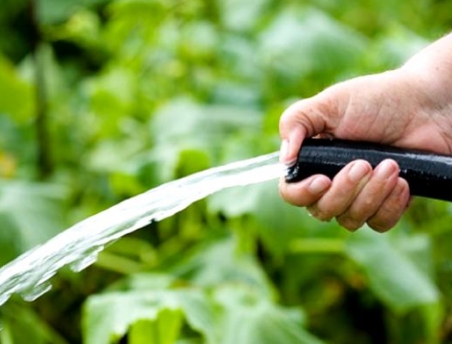 |
Tip 1. Watering as needed
Spring. If the winter was little snow, and in the spring there is very little rainfall, then the plant is watered at least once every 2 weeks. At least 20 liters of water are poured out at a time. Summer. When weigela begins to bloom, it consumes a lot of moisture. If there is no rain, then water the shrub abundantly at least once a week. |
 |
Tip 2. Periodic loosening of the trunk circle
Spring. For the first time, the soil is cultivated immediately after warming up. It is necessary to loosen the top layer that has compacted during the winter to a depth of no more than 10 cm so as not to damage the roots. Summer. Loosening frequency - at least once every 2 weeks. This reduces the evaporation of moisture, improves the air permeability of the soil. At the same time, you remove the weeds while they are still small and easy to remove. Autumn. The last treatment is carried out in the first half of October. After it, the trunk circle is mulched with a layer of peat 10 cm thick.This will protect the root system from freezing |
 |
Tip 3. Proper fertilization of the shrub
1st time. Feed the plant with urea as soon as the snow melts. Just scatter it around the bush and loosen the surface so that the granules go into the ground. 2nd time. During the budding period, use a complex composition containing phosphorus, potassium and nitrogen. Apply fertilizer as recommended in the instructions on the package. 3rd time. In the second half of August, feed the shrub with potash fertilizer. It will help the plant to harden before winter. |
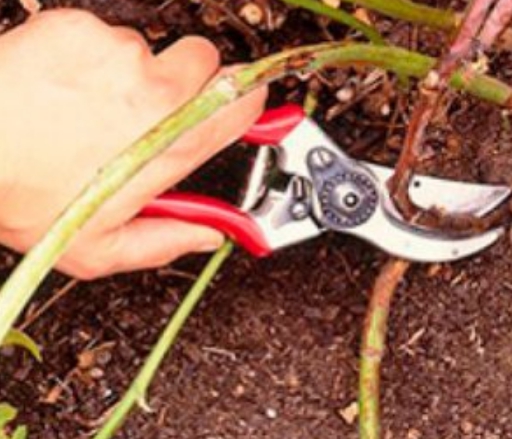 |
Tip 4. Prune your shrubbery
Sanitary pruning. It is carried out immediately after the snow melts. Examine the plant carefully and remove any damaged and frostbitten shoots. Cutting points can be processed with garden varnish. Formative pruning. It is best done every year immediately after flowering. Shoots are cut, which rejuvenate and bloom the next year. You can carry out such work and once every 2 years. |
 |
Tip 5. Cover the weigela for the winter
Step 1. Purchase a canvas or other breathable material. Place arches if the shrub is young and may deform. Cover the plant after freezing the top layer of the soil, just throw the material in one layer and press along the edges, as shown in the photo. Step 2. Shoot in the spring when the snow is almost melting. The branches can be protected with coniferous paws so that they do not burn in the spring sun |
How to propagate weigela
Weigela can be propagated both by seeds and cuttings, both winter and summer
If you do not care whether the varietal characteristics of the bush will remain, you can collect seeds from faded weigela brushes and sow them in boxes with soil in March, like ordinary flowers. Seedlings will be friendly, after a month and a half they can be dived or thinned out
The annual seedling reaches 7 cm in height, has 2-3 pairs of leaves and a superficial root system. The next season, weigela is sent to grow in the garden, in the shade of large trees, until they are planted in a permanent place. By the end of the second year, it reaches 40 cm in height, but can still consist of a single twig. Tillering of the root collar usually begins in the third year. Weigela from seeds will bloom only in the fourth year.
It is much easier and faster to propagate weigela by cuttings after the first flowering, especially since it gives almost 100% rooting. To do this, the green shoots that have just begun to wood are cut so that no more than 2 pairs of leaves remain on each, and the cuts must be straight.
The leaves from the cuttings are cut completely or in half, and they themselves are put first for an hour in water, and then for 12 hours in a solution of a root formation stimulator in a dark room.Treated cuttings are planted in a mixture of peat and sand to a depth of 1 cm, covered with foil, watered 2 times a day until rooting
It is important to periodically ventilate the shelters so that the soil does not become moldy and the cuttings themselves do not rot.
Weigela can be cut and rooted in the spring (in April), but the percentage of cuttings that have taken root will be much lower. They are made 15-20 cm long (up to 1 cm in diameter), cut under the kidney, treated with a growth stimulant, and then planted in pots with peat and sand. Those cuttings that have taken root, after a month, pinch and feed 30 g of superphosphate and ammonium nitrate per 1 sq. M.
Is weigela already growing in your country house?
7.Weigela varieties:
7.1 Weigela Nana Variegata - Weigela florida Nana Variegata
Variegated plants of stunning beauty, distinguished by their compact size. With the help of competent pruning, plants of this variety can be given an attractive rounded shape. In height, these bushes do not exceed 90 - 120 cm and have flexible burgundy shoots that contrast perfectly with the dark green leaves with white edges. An additional decoration of the plant is delicate white or pinkish buds. Flowering earlier - may come back in April.
7.2 Weigela Victoria
Quite powerful bushes of this variety reach 150 - 180 cm in height. Plants have thin, profusely branched branches and glossy, dark green leaves with a burgundy hue. The bright pink buds, which form unexpectedly late - at the end of May, contrast perfectly with the dark foliage.
7.3 Weigela Alexandra - Weigela florida Alexandra
Plants up to 150 cm high, blooming at the end of April. They have lanceolate, fine-toothed burgundy leaves. During the flowering period, they decorate themselves with pink funnel-shaped flowers.
7.4 Weigela Red Prince - Weigela hybrida Red Prince
Tall bushes, easily reaching 2 - 3 meters in height. A distinctive feature of this variety is the very brightly colored crimson or red buds. The leaves are light green and contrast well with the flowers. Flowering is very abundant and long lasting, usually in May.
7.5 Weigela florida Monet Verweig
Dwarf flowering perennials not exceeding 30 - 45 cm in height with a spreading crown of thin, abundantly branched shoots. The leaves are green, decorated with a contrasting white or pink border around the edge. Funnel-shaped, pink flowers form in May.
7.6. Weigela Pink Princess - Pink Princess
These varietal plants are distinguished by their very abundant and long flowering. Subject to the rules of agricultural technology and proper care, pink buds can completely hide the foliage of the shrub. Plant height is 120 - 180 cm, flowering period begins in late spring - early summer.
7.7 Weigela Candida - Candida
Tall plants up to 150 - 250 cm in height are characterized by delicate white funnel-shaped flowers that appear in May - June.
7.8 Weigela All Summer Red - All Summer Red
The compact size of the plants of this variety is combined with a very abundant and long flowering. The height of the bushes reaches only 70 - 80 cm. Bright crimson buds can decorate the bush in April.
7.9 Weigela Rosea
Abundantly flowering tall bushes up to 250 cm in height with long erect or drooping shoots, abundantly covered with delicate pink funnel-shaped buds. Flowering occurs in May, and individual flowers can open throughout the summer.
7.10 Weigela florida Minuet
A characteristic feature of these flowering perennials is their compact size - the height of the plants does not exceed 70 cm. During the flowering period - in spring - these shrubs are literally covered with delicate pink flowers with a delicate aroma.
Reproduction methods
The presented variety can be propagated in several ways.
By cuttings
This is the most popular way.Use green cuttings 10-15 cm long as planting material, which contain at least two leaves. From the selected samples, the leaf blades are cut or shortened and the shoots are left overnight in a growth stimulator in a dark and warm room. Next, the cuttings are planted in a container, covered with glass on top, and the plants are regularly watered and aired. Within a month, the roots should form, and specimens can be planted in a permanent place after 1.5 years. Flowering can only be observed in biennial plants.

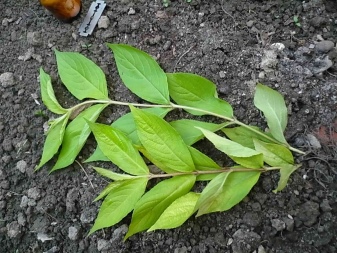
Layers
The essence of this method consists in bending one of the low shoots to the ground and strengthening it, for example, with a bracket. The place of pinning is added dropwise and the area is regularly moistened. Next spring it will be a full-fledged seedling that can be transplanted to a permanent place in 2.5-3 years.

Seeds
For sowing, fresh planting material is used, since this one has the maximum germination - the longer the seeds are stored, the less prospects for a successful result. Seeds collected in the fall are dried on paper and stored in a dry, dark place until spring. Sowing is carried out in containers in shallow furrows or superficially with powder. Next, the container is covered with glass and placed in a warm room. The first shoots can be seen in 2-3 weeks.

How weigela blooms and features of care, see below.
Landing
Planting is carried out in the spring, when the soil is well warmed up. Most often it is April-May. A three-year-old specimen is used as a planting material. If the seedling is purchased in the fall, then it is buried in the ground in an inclined position, and sawdust, peat or humus are introduced from above.
When choosing a place for planting, give preference to sunny areas, but planting is also possible in partial shade, for example, under a sparse crown of a tree. If the plant feels a lack of sun, then it will lose its aesthetic color and form fewer inflorescences. A place next to a fence or building is suitable, which will protect the young fragile seedling from the destructive gusts of wind.
This variety does not impose strict requirements on the soil, therefore, a mixture of humus, sand and turf in a ratio of 2: 2: 1 can be used as a substrate.

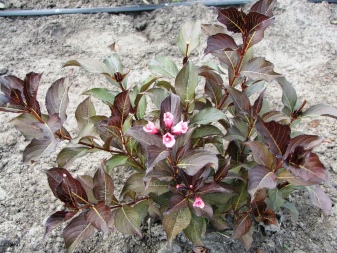
The open ground planting process is as follows.
- Dig a planting hole 60 cm deep.
- Lay a 15 cm drainage layer on the bottom, you can use gravel and sand.
- The next layer is a mixture of leafy earth, sand and compost.
- Remove the seedling from the container. Gently smooth out the root system and place in the hole so that the root collar is not buried.
- Cover the roots with soil.
- Moisten the planting site liberally.
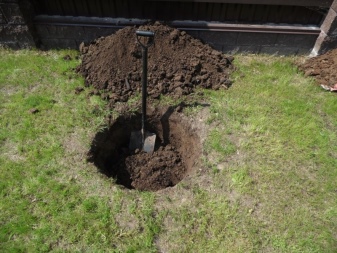
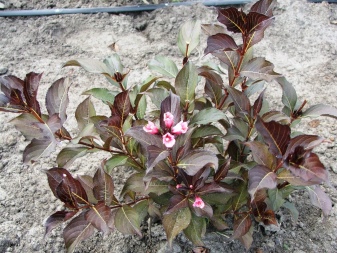
Taking care of the plant is not so difficult, but you cannot start it. The health of the seedling and the beauty of the garden area depend on competent care. Cultivation consists of the following stages.
The shrub needs watering in early spring after dry weather has settled. One copy must be supplied with water in the amount of 8-10 liters. Throughout the season, the site is moistened as the soil dries out. When watering, use water that has settled during the day.

The presented variety is good for feeding. In the spring, you can fertilize the plant with a mixture of urea, potassium salt and superphosphate - this composition will allow you to recover faster after winter frosts.


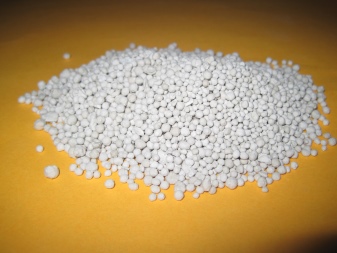

After each watering, it is advisable to loosen the soil and remove weeds. It is impossible to loosen too deeply, 8 cm is enough.To keep moisture in the soil as long as possible, and the weeds grow as little as possible, the trunk circle is mulched, sawdust with a layer of 10 cm is used as mulch.
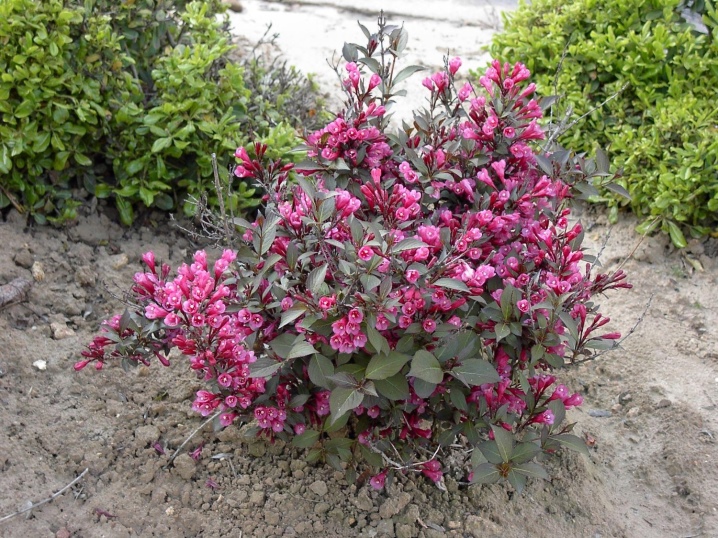
Pruning is done quite rarely - once every 2-3 years. This is due to the slow growth of the culture. Crown formation is carried out after flowering is complete. To rejuvenate the specimen, the stems that are more than 3 years old are removed from it, and the rest are shortened by 1/3.
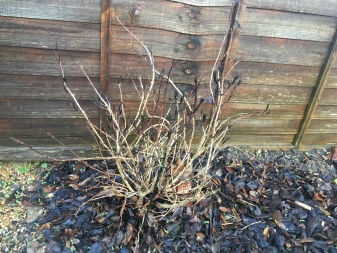

To prepare for the winter cold in the fall, the culture is watered abundantly, after which the shoots are tied up and laid on the ground. It is advisable to mulch the trunk circle - a layer of mulch will protect the roots from freezing. Suitable, for example, humus or sawdust. A shelter of any non-woven material should be organized from above - it will protect the shrub until spring. Do not use polyethylene as a cover - this material does not allow moisture and air to pass through.

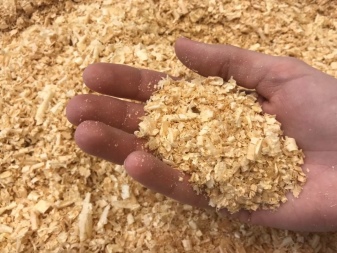
Of the insects, weigelu is most often attacked by aphids. To cope with the problem will help drugs "Iskra" or "Karbofos". Folk remedies, for example, an infusion of garlic or ground pepper, can also provide quality protection. Sometimes the plant becomes a victim of gray rot, rust and mottling. These ailments can occur with high humidity.
{SOURCE}
Plant care rules
On this topic:
BACK
FORWARD
1 of 2
Shrub care includes timely watering, fertilization, as well as crown pruning and preparation and wintering. Whether it is necessary to cover the weigela for the winter depends on the region and climatic conditions. If the temperature drops below zero degrees, the plant must be covered using a special technology. Some shrubs may not withstand severe frosts even under cover, especially seedlings in the first winter.
In the warm season, caring for a weigela is not difficult:
- it is necessary to water the plant during the drought period, at least 10-15 liters of water is applied under each bush;
- periodically fertilize the soil with mineral and organic fertilizers (nitrogen, potash and phosphate fertilizers in different periods of the growing season);
- shoots are also treated against parasites, infections and pathogens of fungal diseases.
Shrubs prefer to grow in conditions of a large amount of oxygen, so the soil must be loosened. The procedure is carried out while watering the plant or applying fertilizers
It is important to ensure that the rhizome is not damaged.
Wintering plants
It is especially important to care for the weigela in the fall and prepare for the winter. Even the most resistant varieties must be sheltered from frost, otherwise they will not be able to restore vital processes after a sharp temperature drop. If they spend this period under cover, the plants will not be affected by frost.
There are two main ways to cover the weigela for the winter:
- in late autumn, pour sawdust or soil under the bush, tilt the branches and wrap them with a special material (Spunbond), tying the branches with a rope;
- build a shelter of metal or wood frame and insulating material on the walls and roof.
The first option is used to shelter varieties with an average degree of winter hardiness, as well as in temperate climates, where there are no severe frosts. Cold air will still penetrate, but non-woven materials retain heat well and protect the plant. Building a greenhouse from improvised means is a more reliable method; it is recommended when caring for varieties of weigela that are more sensitive to the cold.
Shelter of weigela for the winter in the Moscow region and other regions with a cold climate is a prerequisite. However, even if some of the shoots are frozen, the plant has a high regenerative capacity. When the temperature rises in spring and the vegetation processes are activated, it is worthwhile to establish abundant watering of the bush and apply fertilizers to the soil so that it regains its strength after winter.
Crown pruning
When growing weigela, it is recommended to prune the crown annually. This allows you to rid the shrub of damaged shoots, create a beautiful shape and give new branches the opportunity to grow and develop. Depending on the purpose of pruning, there are two types of it:
- sanitary - carried out in the spring to get rid of those branches that have deteriorated under the influence of cold;
- formative - pruning weigela in the fall in order to give the crown the correct shape.
Both types of trimming are recommended. In spring, damaged and old shoots are removed so that new branches can accelerate in growth.However, autumn pruning is more important for the plant - after it, the bush has time to recover well and tolerates cold better. There are several rules on how to prune a weigela in the fall:
- the procedure is carried out immediately after the end of the autumn flowering of the shrub;
- cut off all damaged shoots 5 mm above the extremely healthy bud;
- for rejuvenation, it is recommended to cut off at least a third of secondary shoots;
- remove branches that grow inside the shrub.
Weigela is a bright ornamental shrub. It looks spectacular when decorating a garden, house plots, parks and recreation areas. However, not all varieties are equally resistant to frost and winter well. In conditions of significant air temperature differences, even artificially bred frost-resistant varieties need protection from the cold. Preparing a weigela for winter is her shelter under a canopy or with the help of improvised materials. The rest of the year, the plant is unpretentious in care and pleases with flowering twice a season.
Reproduction
Like most other plants, the Cossack juniper lends itself to reproduction, and now every amateur can create a coniferous greenhouse or make a decorative fence of the garden area. Thanks to the hard work of gardeners and biologists, today there are 4 variants of the reproduction of the Cossack juniper, each of which has its own characteristics and involves certain requirements for the procedure.
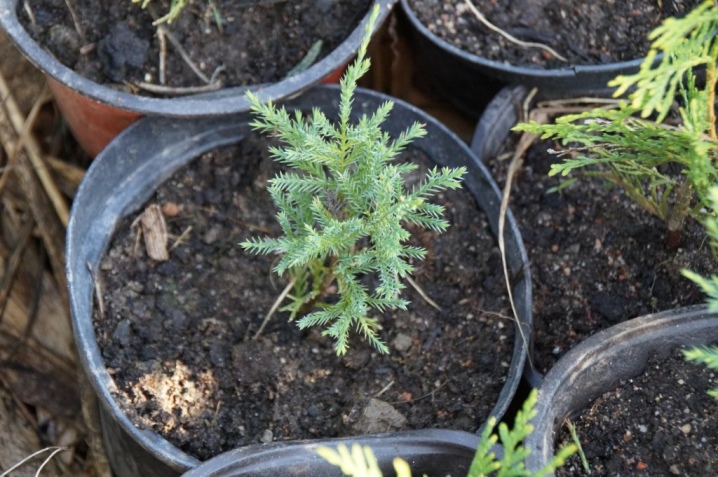
Cuttings
A fairly common and most common way of propagating various types of plants. In this case, you can use both a shoot plucked in the wild, and a small shoot from a bush growing in the garden. Cuttings can be of the winter-autumn type, as well as spring and summer. A small stem is cut from the base of an adult bush and placed in fertile soil. In the spring or summer period of the year, abundant watering is carried out until the gardener is confident that the cutting has taken root.

In the winter-autumn period, it is necessary to maintain a moist soil until the first snow appears. It will be possible to start watering in the spring, after the snow melts. If the planting takes place before the onset of cold weather, it is necessary to cut off the stem of the plant and push it into the soil by about 15 cm.
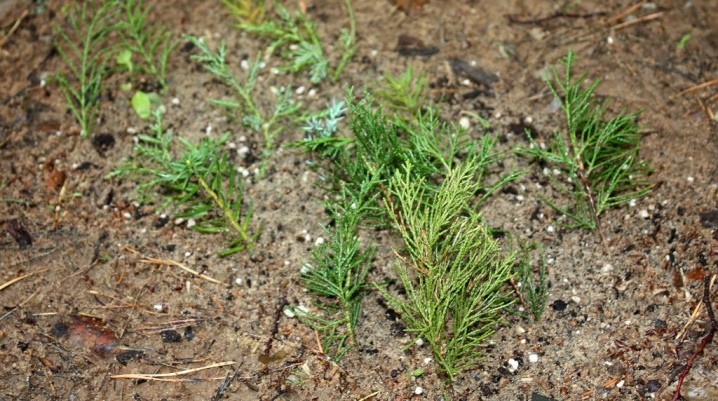
Seeds
Modern gardeners try not to use the seed method of reproduction of the Cossack juniper. Firstly, because the process is very long, the work itself is extremely laborious. Secondly, in the final result, a juniper grows, which has lost its grade.
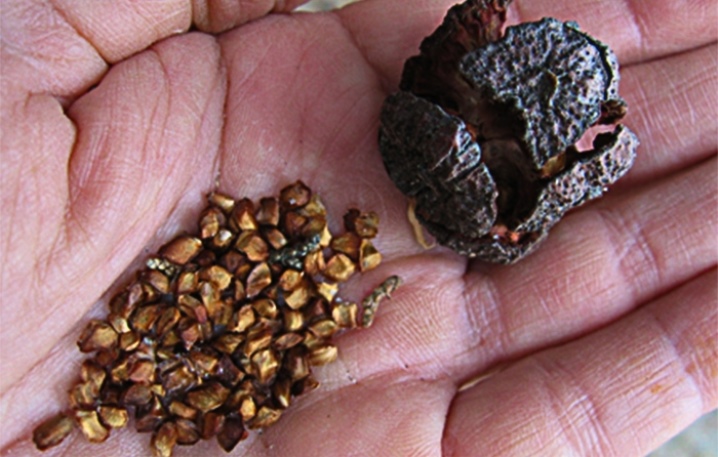
Layers
The easiest way to increase the population of Cossack juniper on your own site. We are talking about the rooting of branches in contact with the soil surface. The same factor contributes to the growth of the bush in width, due to which dense thickets are formed. If the soil rooting is not visible, it is enough to cut off the necessary material from the parent bush, root it and plant it a short distance. It is much easier to lean and pin the branch to the ground, and then water it periodically.
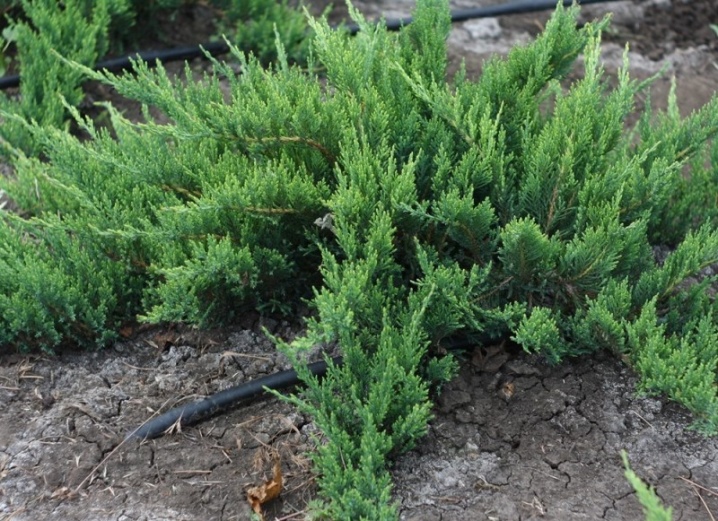
Vaccinations
This method of reproduction will help to obtain an ornamental plant in a short period of time. To do this, you need to combine 3 or 4 pieces of material at once. The main thing is that in the process of rooting, they are located at an angle of 45 degrees, forming the shape of a bowl. The only caveat is the lack of cup-like shape in some juniper varieties; you should not take them for grafting propagation.

Possible problems
If the weigela bushes dry out after planting, the development of the plant is weak, and the leaves and branches do not increase in size, most likely the cause is freezing. Top dressing and treatment with Epin is a good treatment. The problem may also be associated with the lack of shelter for the winter (or poor quality shelter). It is necessary to inspect whether the green parts remain on the plant.

Cutting leaves and processing with epin do not always help out when weigela withers. The sooner this is done, the better the chances of success. You cannot assume that everything will pass by itself. If you have to transplant a crop in the summer months, shelter from the scorching sun for 15-20 days will help to avoid wilting, until adaptation to a new place ends. Small bushes are covered with buckets in which holes are punched, and larger ones - with shields or spunbond.

Nana Variegata or Purpurea: Similarities and Differences
Blooming weigela is one of the species introduced from Japan and northern China. Prefers warm sunny areas, grows well under favorable conditions. The peculiarity of the shrubs presented is that they bloom twice a season. The first wave occurs in May, June or July. Repeated flowering, like that of the Virginia mock-orange, occurs at the end of August or September, but it is not so exuberant. The main advantage of flowering representatives in comparison with wild plants is the rich color of the petals.
Weigela Nana Variegata is a slow growing flowering cultivar. The buds appear on the shoots of the last year. The height of an adult bush reaches 1-1.5 m, diameter - 1.5-1.8 m. The oblong leaves of the weigela are colored green with white or yellowish edging. The inflorescences are composed of crimson and white-pink flowers 2.5-4 cm long.
 Weigela nana variegata
Weigela nana variegata
This specimen is shade-tolerant, picky about soil moisture, and reacts poorly to waterlogging. Prefers sunny locations and fertile drained soils. The root system of the plant is resistant to overconsolidation of an earthen coma, but tolerates salinity. Pruning is carried out after flowering for 2-3 years of growth. Relatively winter-hardy, but when grown in the middle lane needs light shelter. She, like boxwood, cannot do without preparation for winter. In severe frosts, it can freeze, but in the spring it quickly grows green mass.
Decorative features of Purpurea:
- Variety Purpurea (Purpurea) is a compact spherical bush up to 1 m in height and 2 m in diameter.
- Leaves are brownish-red, reddish-green by autumn. In the sun, they acquire a more brown color.
- Flowers-bells of a purple hue with a yellowish center are collected in inflorescences of 3-4 pcs. Flowering begins in June and lasts a month, then becomes more scarce, but the buds continue to appear until frost.
- The average annual growth is 15 cm. Purpurea develops rather slowly, reaching its maximum width and height only by 5-10 years.
- Grows superbly in a sunny area and in the shade of trees. Preference is given to fertile acidic soils.
 Purpurea
Purpurea
The presented varieties differ from other varieties of weigela in relative resistance to adverse conditions. The shrub is native to regions with a humid and warm climate, so not many of its species are suitable for growing in the middle lane, where cold temperatures are observed in winter.
In landscape design, Nana Variegata is used in rocky gardens, as part of a multi-tiered flower bed. Nana Purpurea is grown in beds, compound beds or as a living fence. If shrubs are used as hedges, they do not need to form due to the correct crown shape. From Purpurea, excellent flowering hedges are created, provided that the seedlings are placed at a distance of 2 m from each other.
Weigels are placed in the foreground or in the center of garden compositions. At the same time, shrubs look good as single plants. An interesting ensemble is obtained from both varieties planted side by side on the lawn. For presentability, some gardeners supplement it with a tree peony; planting in the open field is usually successful. It is possible to cultivate the Purpurea variety in pots and boxes, decorating balconies and verandas.
What plants are the presented varieties combined with? It can be:
- barberry,
- forsythia,
- cotoneaster,
- spirea,
- chubushnik,
- garden hibiscus, the care of which is not so difficult;
- Japanese quince and other deciduous plants.
The composition on the site is complemented with juniper, western thuja, cypress or boxwood.
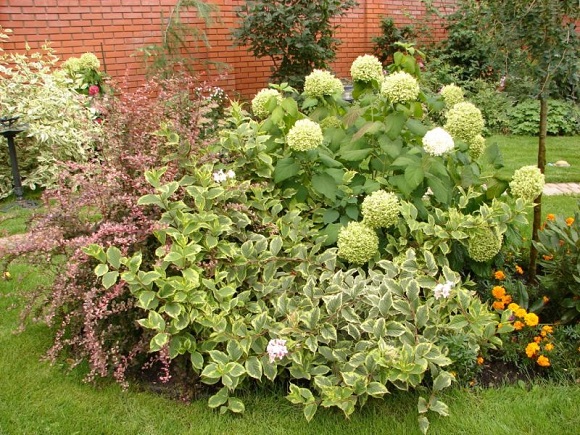 Neighborhood with hydrangea and marigolds
Neighborhood with hydrangea and marigolds


